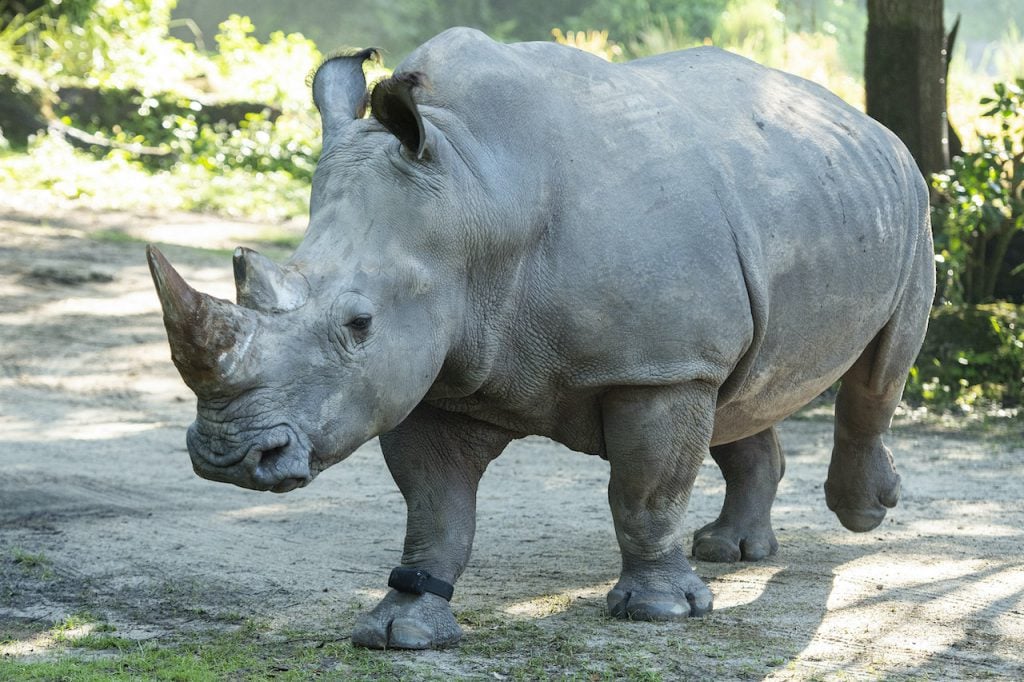
Disney Takes Rhino Care One Step Further
Originally published at Disney Parks News
With so much to see and do at our parks, it’s very easy to get your steps in when visiting Walt Disney World Resort. And with wearable fitness trackers being so accessible – from watches on your wrist to apps on your phone. It’s simple and convenient to see how much ground you’ve covered throughout the day. Between visits to your favorite attractions, restaurants, and shows.
But did you ever think that technology would one day find a home on the savanna and play a role in conservation?
Well, at Disney’s Animal Kingdom Theme Park, there’s a new species “horning in” on this fitness craze … rhinos!
Guests aboard Kilimanjaro Safaris may notice some of the rhinos – along with rhinos at select accredited institutions around the U.S. – are sporting an activity tracker. That is very similar to the popular fitness trackers many of us have worn to track our daily steps and activity. But on a much larger scale!
These activity trackers will help us better understand the activity levels of the rhinos. In our care throughout the day and when they settle in for the evening. Because of the built-in accelerometer, we can track the distance they cover by running and walking around the savanna. We also can better track their sleeping and napping schedules.
And with the built-in GPS unit, this activity tracker allows us to see where on the savanna the rhinos like to spend their time.
This enables us to understand which features in the habitat are most popular to them. And we can better determine which factors, like wallows, sun, and shade, impact the areas they use.
These efforts to better understand the role of physical fitness in the overall health of rhinos are one part of a larger, collaborative research project. With rhinos from accredited zoos and wildlife centers across the U.S. When combined with other data from veterinarians, scientists, and animal care specialists, this information on physical fitness will help all animal care experts. To better understand how different habitats play a role in rhino health.
Managed rhino populations are becoming increasingly important for the survival of the species due to illegal poaching in the wild.
Once complete, this research will be compiled and shared with animal care professionals at 74 AZA-accredited facilities. Helping ensure rhinos receive the best care for many generations to come!
So, how do you think your average daily steps and distance covered compare to the rhinos on Kilimanjaro Safaris?
Follow this and other Disney Planet Possible stories on the Disney Parks Blog!






